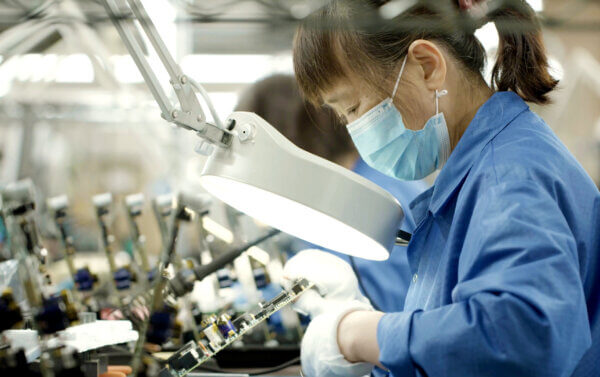 One of your biggest challenges in manufacturing is cost. Our experience tells us that you are trying to keep your prices down and not sacrifice quality. In global manufacturing, cost is determined by many factors.
One of your biggest challenges in manufacturing is cost. Our experience tells us that you are trying to keep your prices down and not sacrifice quality. In global manufacturing, cost is determined by many factors.
Your question is simple: “How much will it cost for you to make my product?” Since each of your custom components or sub-assemblies is unique for your application, there is no quick answer.
What we can share are the top factors that will determine how much it would cost to make your project.
Factors that Determine the Cost of Manufacturing a Product
Material
What raw material is needed to meet your specifications? There are different grades and classes of raw material. Plastic, metal and electronics can come in good, better, or best options. As you can imagine, the price increases as you move up.
Not sure which material you need or can substitute? We can help you determine the best cost to help you reach your application requirements.
Labor
While automation, robotics, and machines are being deployed in manufacturing faster than ever, you still need people. It takes people to operate the machines, inspect raw material, inspect and assemble finished goods, test products, package, load, and ship them.

3rd Party Compliance
Does your project need approval by UL, ETL, CSA or even the FDA?
Will you handle the approval process, or would you prefer your manufacturing partner do that? It’s best for you to know if agency approval will be required at the start. You do not want additional time or cost added as you get your products to market.
Tooling
If your project requires a tool, there are cost factors involved in that decision. The grade of steel determines the longevity and ultimately, cost. Single cavity or multi-cavity do as well. If you choose a single cavity or multi-cavity tool, price per piece is affected. Will your manufacturer guarantee the tool for life?
Volume Discounts
Raw materials, like wholesale supplies, have lower prices as the volume increases. The higher your Estimated Annual Usage (EAU), the lower the price. 120,000 pieces per year will be cheaper than 12,000 per year.
A second factor in volume is Minimum Order Quantity (MOQ). For example, electronic components typically come in reels of 5,000. If you only need 4,000 for your custom project, the cost of the additional 1,000 needs to be considered.
Cost of Quality
If your product requires assembly, then you will need testing and assembly fixtures. Types of testing could include function, heat, exposure or lifecycle.
Testing is the most underestimated factor in your overall cost of quality. If you need a more extensive test on each unit to verify function, you should expect a higher cost of quality.
 Yield
Yield
Every Original Equipment Manufacturer (OEM) and global manufacturer strives for perfection. Occasionally imperfect raw materials or components (even a machine failure) can yield a few cosmetic or functional defects that will need to be scrapped.
You should budget for approximately 1% of the cost.
Overhead
Your company, like ours, must pay for the people, materials, machines, insurance, taxes and make a little margin to reinvest back into capital improvements and more people, materials, machines…
Packaging
Do you need 4-color retail packaging? Or individual or bulk packaging? Maybe blister pack, single layer pallet or corrugated color boxes? What about pallet configuration and pieces per box? You have lots of options and each can affect the landed price per piece.
Your packaging options are extensive. Knowing your requirements will provide accurate prices from the start.
Freight (and Possibly Duty)
Don’t forget to budget for shipping and logistics into your product pricing.
You might be facing any combination of fees including ocean, full container load, less than container load, expedited air freight, truck freight, customs or import/VAT, exchange rates, warehouse or inventory management cost.
Even if you want to handle your own freight domestically or internationally, there are hard and soft costs to consider.
By now you get the picture of what goes into determining an estimate of manufacturing costs. Imagine trying to best guess a quick quote when you have a multitude of factors that exist on a sliding scale. You want your manufacturing partner to be accurate with their quote. It’s important to provide as many details as possible so you know that you can compare one quote to another, apples to apples.
It doesn’t hurt to be patient as well. The more complex your bill of materials (BOM) and any post-production process or assemblies are needed, the more time it will take to evaluate and determine a cost.



